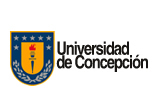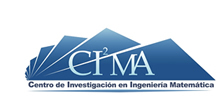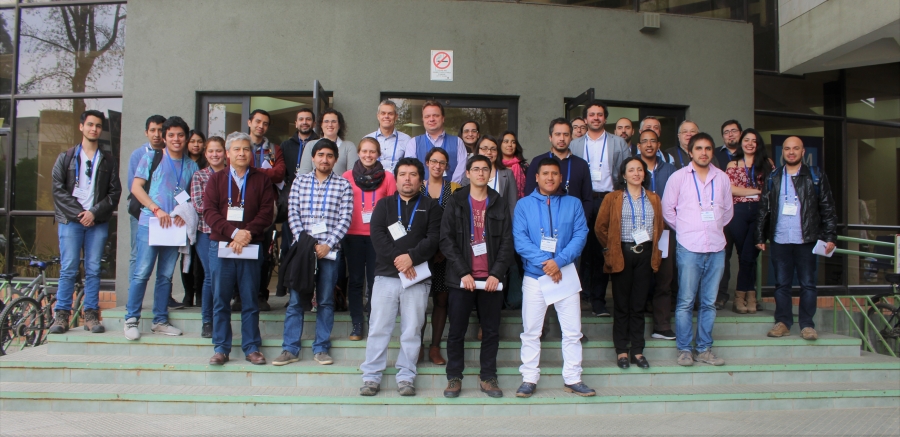News
Leading researchers from different countries gave talks in the workshop
During Wednesday 27 and Thursday 28 September, a seminar called Third CI²MA Workshop. Mathematical Modeling for Bioprocesses, Wastewater Treatment and Mineral Processing, was held at the auditorium of the Faculty of Physical and Mathematical Sciences, Universidad de Concepción, UdeC, which was organized by Fernando Betancourt and Raimund Bürger, both researchers from Center for Research in Mathematical Engineering, CI²MA, and the Center for Water Resources for Agriculture and Mining, CRHIAM.
 The event was motivated by the fact that the scientific activity carried out between academicians of both research centers of UdeC is increasingly focused on real applications involving physical processes of solid-liquid or gas-solid separation, biochemical reactions and unit operations. Thereby, an important line of work focuses on the formulation, analysis, efficient numerical solution and the application of models that are enunciated in the language of partial differential equations, which in turn arise from continuous mechanics fundamental laws, chemistry and other areas. The main objective of the workshop was to discuss recent advances and new problems in this line of research with professionals and academicians of areas such as Applied Mathematics, Engineering Sciences, and related fields.
The event was motivated by the fact that the scientific activity carried out between academicians of both research centers of UdeC is increasingly focused on real applications involving physical processes of solid-liquid or gas-solid separation, biochemical reactions and unit operations. Thereby, an important line of work focuses on the formulation, analysis, efficient numerical solution and the application of models that are enunciated in the language of partial differential equations, which in turn arise from continuous mechanics fundamental laws, chemistry and other areas. The main objective of the workshop was to discuss recent advances and new problems in this line of research with professionals and academicians of areas such as Applied Mathematics, Engineering Sciences, and related fields.
One of the outstanding researchers who attended the workshop and taught one of the lectures was Professor Pep Mulet from Universitat de València, Spain, who has an extensive and productive collaboration with CI²MA researchers, especially Professor Raimund Bürger. Professor Mulet, whose presentation was named Implicit-explicit conservative schemes for the equilibrium dispersive model of chromatography, noted that the seminar was “very interesting by the interaction with the wastewater treatment industry, which is very relevant because, from academia we look at problems one way, and then the industry needs different things. We have certain assumptions, but it is the interaction between each other that makes us achieve relevant results”, he said and went on to say that “speakers who are closer to industry like Manuel Larenas gave a very clear conference. For example, when we work on sedimentation issues, we assume that there is a certain size distinction, but then I realized that it is an ingredient that is not so easy to find, and it is not controlled and it turns out that controlling it is crucial to get some type of mathematical tool”.
Another speaker at the seminar was Professor Stefan Diehl, researcher from Lund University, Sweden, who presented the talk A model of a flotation column described by a conservation law with multiply discontinuous flux, and coincidentally, he emphasized that the workshop “was very successful, with local and foreign collaborators, researchers and agents from industry. Sometimes these meetings are not so productive, because researchers and companies have different cultures and we see things with different optics. This time, I must say that this was not the case. All the seminar talks were well prepared for a mixed audience. One of the reasons for this success is that people in the industry have strong connections to the university, for example, through PhD students”, he explained. As for the collaboration that emerged from the workshop, Professor Diehl detailed that “it was an excellent chance for this. For example, our theoretical model of flow function identification used for simulation of sedimentation in mineral or wastewater treatment will now be tested by actual experiments by Department of Metallurgical Engineering from Udec”
Other speaker who presented talks in the workshop were Julio Careaga, UdeC, Chile (Modeling and numerical simulation of sedimentation in conical vessels); Manuel Larenas from JRI Research Center, Chile (Numerical simulation of solid-liquid separation applied to industrial thickening of mining slurries); Alonso Pereira, UdeC, (Process dynamics and control of industrial thickeners); M. Carmen Martí, UdeC (Unified multi-class framework to model settling tanks in water resource recovery facilities); Diana Celi, UdeC (Determination of the volumetric solids fraction of saturated polydisperse ore tailing sediments); Claudia Castillo of CSIRO Minerals, Chile (Effect of salinity on the dynamics of flocculation of copper sulphide tailings with clay content); Christian Ihle, Universidad of Chile (CFD simulation of cation exchange in slurry pipeline flow); Elena Torfs, ModelEau, Université Laval, Québec, Canada (Full scale measurements and model development for reactive settling of activated sludge); Elisa Giustinianovich, UdeC (Granular partial nitritation / Anammox process: why modeling and main challenges); and Camilo Mejías, UdeC (Modeling biofilm growth in a granular sludge bioreactor).
Professor Raimund Bürger emphasized that “this workshop was a result of a very successful collaboration between CI²MA and CRHIAM and it is important to thank the support of both centers that has allowed us to invite Professor Stefan Diehl, not only this time, but also on previous events. Thus, we are also promoting a relationship with Center for Mathematical Sciences from Lund University as an official international counterpart of CRHIAM”. This event was financed by funds from CI²MA and Conicyt (Chile) through projects PFB03 CMM-Basal, Fondap 15130015 CRHIAM, PAI / MEC / 80150006 and Fondecyt 1170473.
Go to this workshop photo gallery by clicking the picture:


